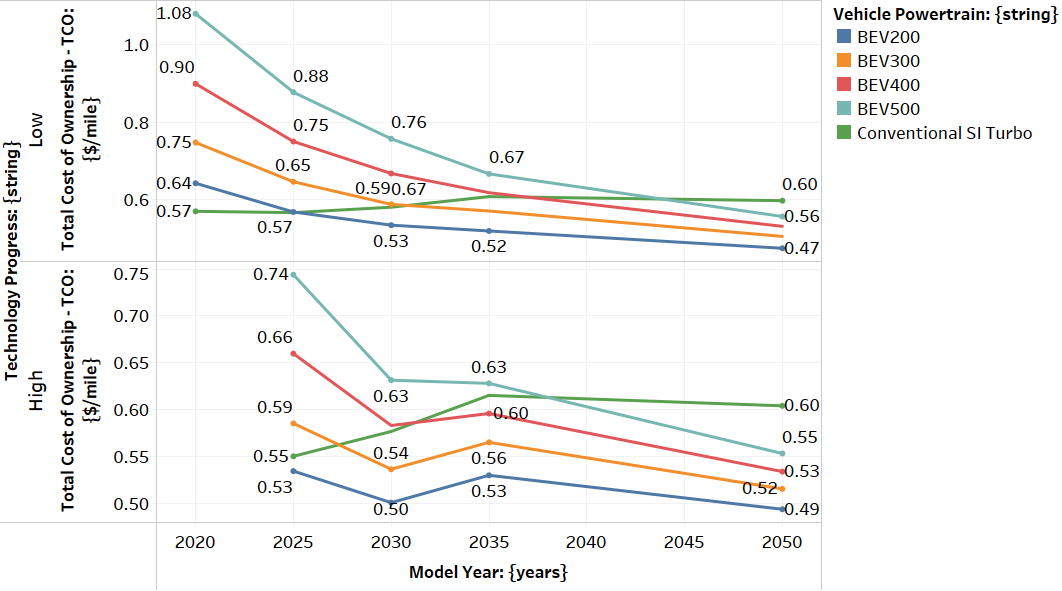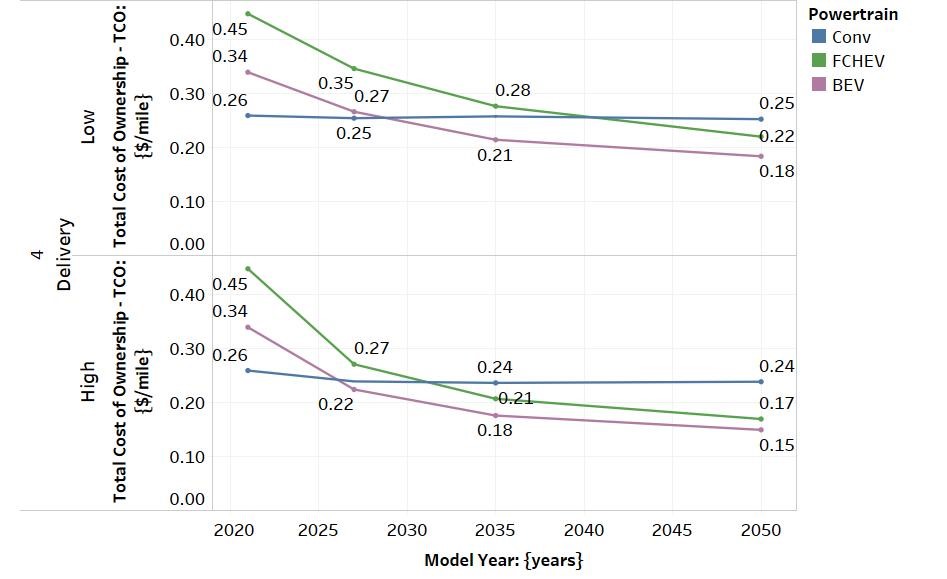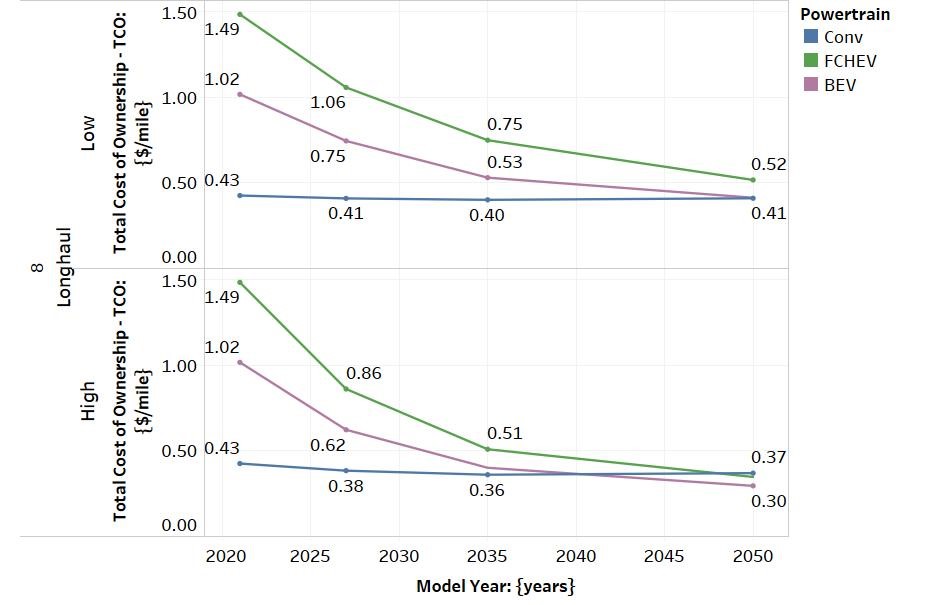Battery Electric and Fuel Cell Vehicles Cost Parity
Published: 2022 January
Determine when battery electric vehicles (BEVs) and fuel cell electric vehicles (FCEVs) will reach cost parity with conventional powertrains with TechScape.
Based on the latest study by the U.S. Department of Energy (DOE) quantifying the impact of advanced vehicle technologies on energy consumption and cost, TechScape was used to estimate when different technologies would be cost competitive from a total cost of ownership (TCO) perspective. Developed by the Argonne National Laboratory Vehicle & Mobility Systems Group (VMS), TechScape was used across all vehicle classes and applications, from compact cars to line-haul trucks.
BEV Cost Parity for Passenger Cars
For small sport utility vehicles (SUVs), considering current technology progress trends (low technology scenario), BEVs will become cost competitive with conventional powertrains between the 2025 (BEV 200 miles) and 2040 (BEV 500 miles) model years. Under the high technology scenario, BEVs become cost competitive an average of five years earlier, thus significantly accelerating their market adoption.

BEV and FCEV Cost Parity for Trucks
For Class 4 delivery trucks, considering current technology progress trends (low technology scenario), BEVs will achieve TCO parity with conventional vehicles as soon as the 2028 model year. Achieving high technology progress would accelerate the timeframe by two to three years. Fuel cell vehicles are expected to achieve TCO parity by 2030, 10 years earlier than the low technology scenario.

For heavy-duty long-haul trucks, achieving the high technology scenario will be critical to reaching TCO parity. Higher levels of technology progress will accelerate the market adoption by about 10 years for these vehicles; by 2040 for BEVs and by 2045 for FCEVs.

To learn more, visit our US DOE VTO/HFTO R&D Benefits web page and the DOE report on TCO.